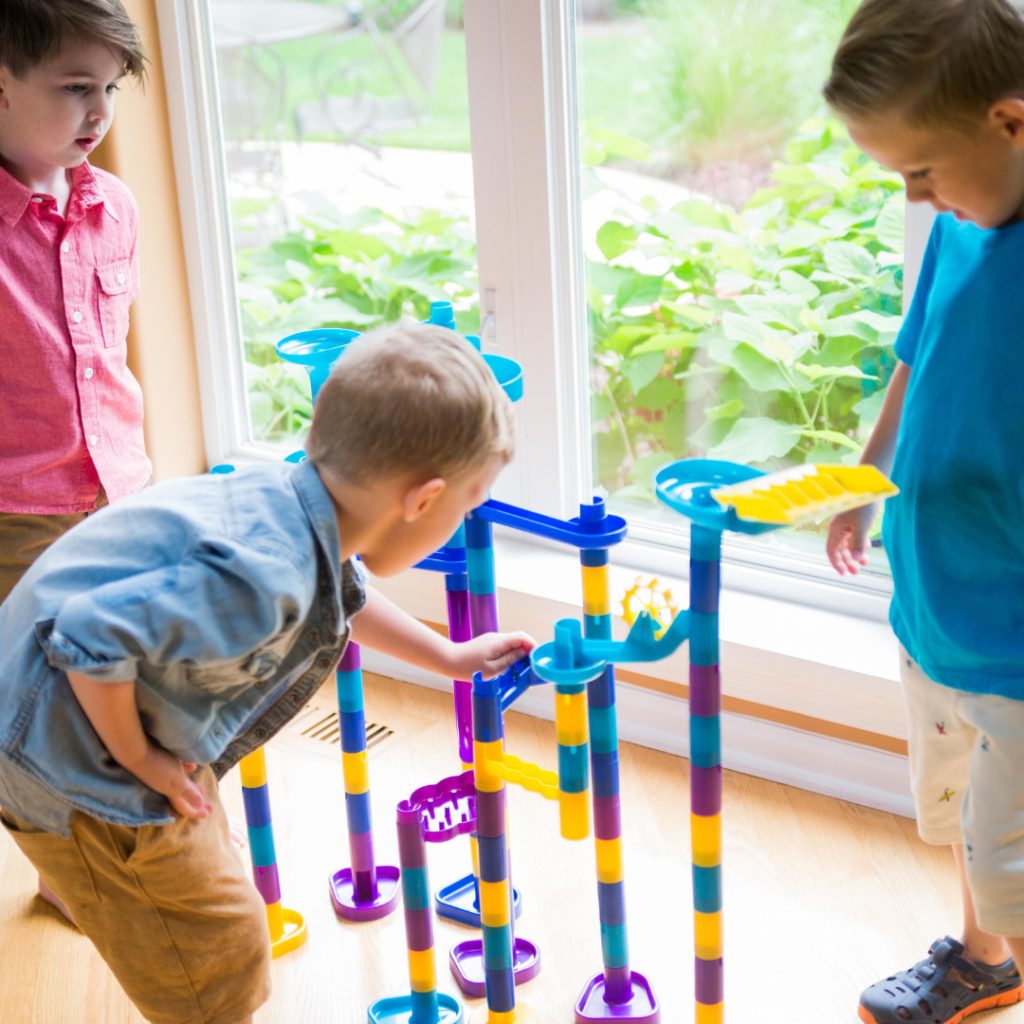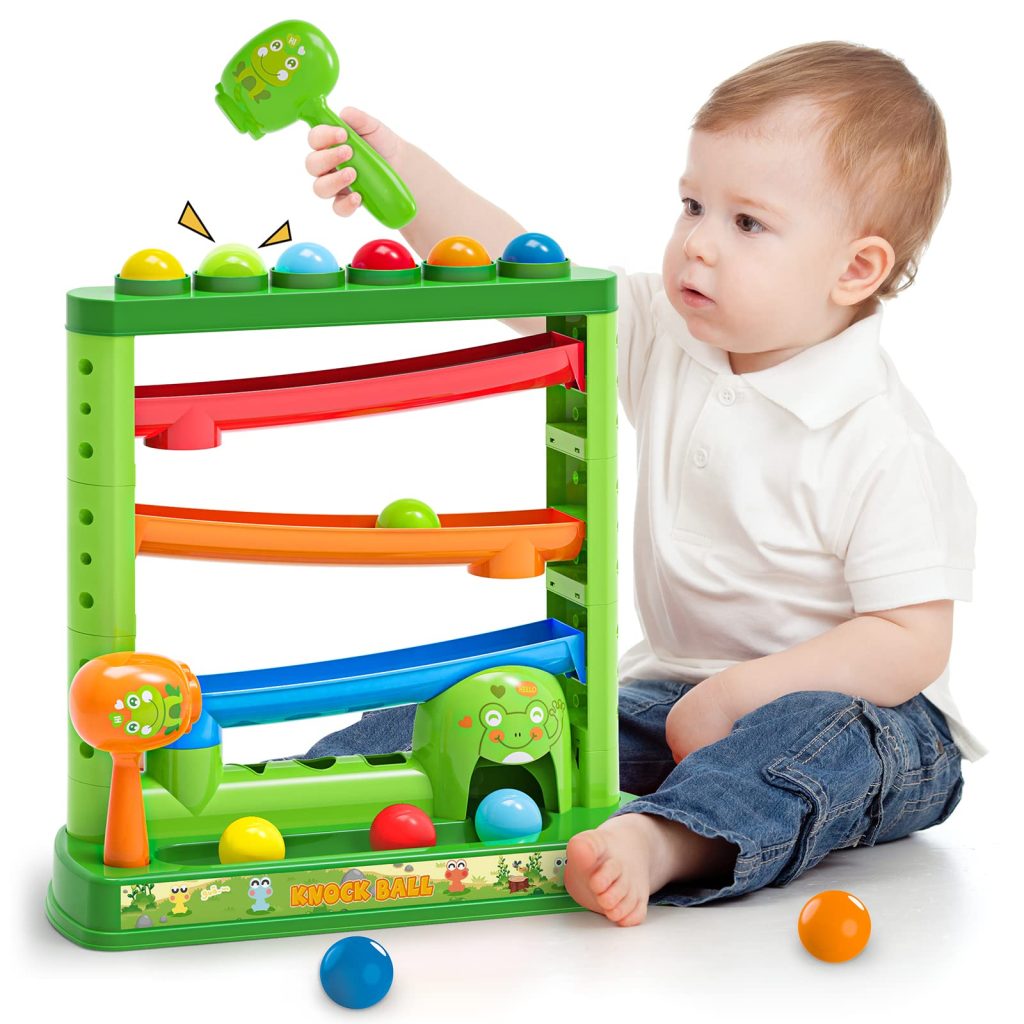Selecting the right toys for toddlers is crucial for their development and happiness. Toys are more than just fun; they serve as tools for learning, growth, and skill development. This comprehensive guide explores the different types of toddler toys, their benefits, essential features, age-appropriate choices, brand recommendations, and tips for organization and maintenance.
Different Types of Toddler Toys
Educational Toys
Educational toys are designed to stimulate a child’s mind and help them learn new skills. These toys often involve activities that enhance cognitive abilities, such as puzzles, shape sorters, and educational games. For example, alphabet blocks can help toddlers learn letters and develop their vocabulary, while a simple counting toy can introduce them to numbers and basic math. The key is to choose toys that are age-appropriate and align with the child’s developmental stage. Educational toys make learning enjoyable and help instill a love of learning in young children.
Sensory Toys
Sensory toys engage a toddler’s senses and promote sensory development. These toys often have different textures, colors, and sounds to stimulate sight, touch, and hearing. Examples include textured balls, musical instruments, and tactile books. Sensory toys are particularly beneficial for young children as they explore their environment and develop fine motor skills. These toys can also have a calming effect, making them useful for soothing and focus. Overall, sensory toys provide a rich, exploratory experience that supports cognitive and motor development.

The Benefits of Toddler Toys
Cognitive Development
Toddler toys play a critical role in cognitive development. Toys that challenge a child’s thinking skills, such as puzzles or building blocks, encourage problem-solving and logical thinking. For instance, when a toddler figures out how to fit a square block into a square hole, they are learning about shapes and spatial relationships. Educational toys that involve numbers, letters, and shapes can introduce foundational concepts that will be important in school. By providing age-appropriate toys, parents can support their child’s cognitive growth and foster a lifelong love of learning.
Motor Skills Development
Toddler toys also contribute to the development of both fine and gross motor skills. Fine motor skills involve the use of small muscles in the hands and fingers, and can be developed through activities like stacking blocks or threading beads. Gross motor skills, on the other hand, involve larger muscles and can be improved with toys like tricycles, balls, and climbing structures. Encouraging toddlers to play with a variety of toys helps them strengthen their muscles and improve coordination. These physical skills are essential for everyday activities and future athletic endeavors.
Essential Features of Toddler Toys
Safety
Safety is the most important feature to consider when selecting toddler toys. Ensure that toys are made from non-toxic materials and do not have small parts that could pose a choking hazard. Check for any sharp edges or loose components that could be dangerous. It’s also wise to look for toys that are easy to clean, as toddlers are prone to putting things in their mouths. Many reputable brands will have toys that meet safety standards and certifications, providing peace of mind to parents. Always supervise playtime to ensure safety.
Durability
Durability is another crucial feature for toddler toys. Toddlers are naturally curious and energetic, and their toys need to withstand rough handling. Choose toys made from sturdy, high-quality materials that can endure drops, throws, and other forms of play. Wooden toys, for example, are often more durable than plastic ones and can last for years. Durable toys not only provide more playtime but are also more cost-effective in the long run. Investing in well-made toys ensures they will last through your child’s toddler years and possibly even for future siblings.

Age-Appropriate Choices
Age 1-2 Years
For toddlers aged 1-2 years, choose toys that are simple, safe, and engaging. Soft balls, stacking toys, and simple shape sorters are excellent options. These toys help toddlers develop their fine motor skills and hand-eye coordination. At this age, toddlers are also learning to walk and explore their environment, so push toys and ride-on toys can be beneficial. Interactive toys that respond with lights and sounds can also captivate their attention and encourage exploration. It’s essential to choose toys that match their developmental stage and interests.
Age 2-3 Years
For toddlers aged 2-3 years, look for toys that promote more complex skills such as problem-solving and creativity. Building blocks, simple puzzles, and art supplies like crayons and paper can help stimulate their imagination. At this age, toddlers also enjoy pretend play, so toys like play kitchens, tool sets, and dolls can be very engaging. Ride-on toys, tricycles, and sports equipment are excellent for developing gross motor skills. Providing a variety of toys that cater to different areas of development can help toddlers achieve balanced growth.
Brand Recommendations
Fisher-Price
Fisher-Price is a well-known and trusted brand that offers a wide range of toddler toys designed to promote learning and development. Their products are known for their durability, safety, and engaging features. From educational toys like learning tables and activity centers to sensory toys like textured balls and musical instruments, Fisher-Price has something for every developmental stage. The brand’s commitment to quality and innovation makes it a reliable choice for parents. Fisher-Price toys are designed to be both fun and educational, ensuring that toddlers enjoy and benefit from their playtime.
Melissa & Doug
Melissa & Doug is another highly reputable brand that specializes in high-quality, durable toys that promote creativity and learning. Their products often feature natural materials like wood and are designed to stimulate open-ended play. Examples include wooden puzzles, stacking toys, and pretend play sets. Melissa & Doug toys are known for their craftsmanship and educational value, making them a favorite among parents and educators. The brand focuses on creating toys that encourage imaginative play and cognitive development, providing toddlers with endless opportunities for exploration and learning.

Organization and Maintenance
Toy Storage Solutions
Effective toy storage solutions can help keep your living space organized and make it easier for your toddler to find and access their toys. Consider using storage bins, shelves, and baskets to categorize and store toys. Label bins with pictures or words to help toddlers learn where to put their toys away. Multi-functional furniture like storage benches or ottomans can provide additional storage while saving space. Regularly rotating toys can also keep playtime fresh and exciting, as well as limit the number of toys available at one time, making clean-up easier.
Regular Cleaning
Regular cleaning and maintenance of toddler toys are essential for both hygiene and longevity. Soft toys can often be machine washed, while plastic and wooden toys can be wiped down with a mild detergent and water. Ensure that toys are thoroughly dried before returning them to storage to prevent mold and mildew. Regularly inspect toys for any signs of wear or damage and replace any broken parts to ensure safety. Keeping toys clean and well-maintained not only makes them safer for your child to play with but also extends their lifespan, providing more value for your investment.
Toddler toys play an essential role in a child’s development by offering opportunities for learning, growth, and exploration. By understanding the different types, benefits, essential features, and age-appropriate choices, parents can make informed decisions about which toys to introduce to their toddlers. Brands like Fisher-Price and Melissa & Doug offer high-quality, safe options that cater to various developmental needs. Proper organization and regular maintenance ensure that toys remain safe, clean, and enjoyable for your little one. With the right selection of toys, you can create a stimulating and fun environment that supports your toddler’s developmental journey.
